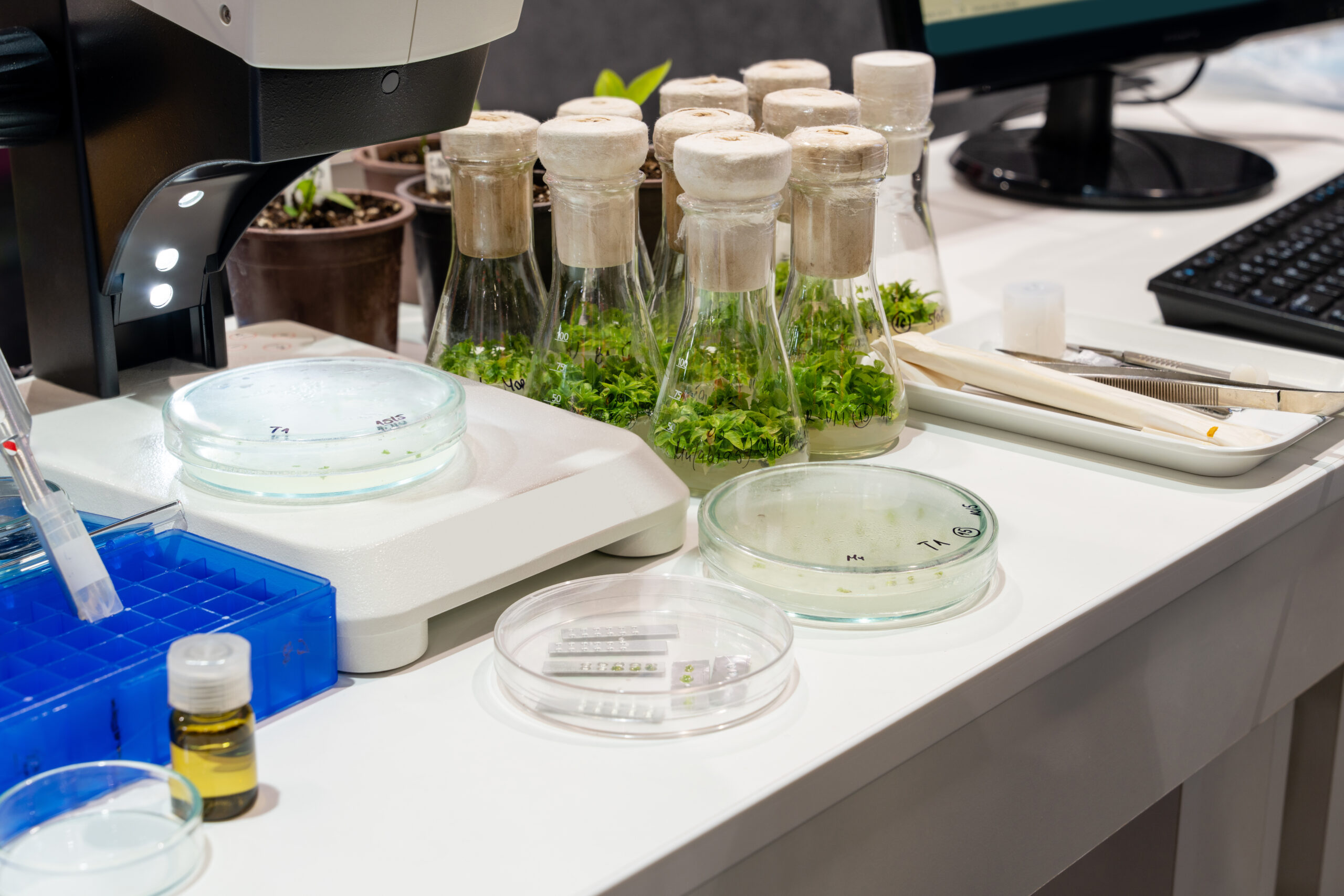Life-Saving Drugs – Planet-Killing Waste: Why Pharma Must Go Green Now
The pharmaceutical industry, historically known for its high energy consumption, toxic waste production, and reliance on harmful chemical solvents, has long been criticized for its significant environmental footprint. Traditional drug manufacturing processes often generate pollution, contribute to resource depletion, and introduce health hazards, both for workers and consumers. In response to these concerns, a growing movement within the industry is embracing green chemistry—a paradigm focused on designing drugs and manufacturing processes that reduce harmful environmental impacts. This shift is not only about environmental protection; it also aims to streamline operations, increase cost-efficiency, and ultimately safeguard public health. In this blog, we will explore how sustainability and green chemistry are reshaping the pharmaceutical sector, offering new solutions to age-old problems.

"Pharmaceutical innovation must align with environmental stewardship—green chemistry is no longer optional, but essential. Sustainable drug manufacturing ensures therapeutic progress without ecological compromise."
What is Green Chemistry?
Green chemistry, also known as sustainable chemistry, involves the design of chemical products and processes that minimize negative environmental and human health impacts. At its core, it aims to create products and processes that are efficient, sustainable, and environmentally friendly. The pharmaceutical industry’s adoption of green chemistry principles seeks to address the numerous challenges inherent in drug manufacturing, which traditionally consumes vast amounts of resources and generates significant chemical waste.
Some of the fundamental principles of green chemistry include:
Minimizing waste: Reducing by-products and chemical residues during the drug synthesis process.
Using renewable resources: Transitioning away from fossil fuels and non-renewable raw materials toward renewable resources such as biomass.
Eco-friendly solvents: Substituting toxic solvents with safer alternatives such as water-based solutions or supercritical CO₂, which is non-toxic and recyclable.
Energy efficiency: Developing processes that consume less energy, minimizing environmental impact while optimizing production.
By focusing on these core principles, green chemistry aims to improve the sustainability of pharmaceutical manufacturing by reducing pollution, conserving resources, and making drug production safer.
Why Sustainability Matters in Pharma
The pharmaceutical industry is an energy-intensive sector, with traditional manufacturing methods involving large-scale energy use, hazardous chemical inputs, and significant waste generation. Several aspects of traditional pharmaceutical manufacturing are particularly harmful to the environment, including:
High energy consumption: Drug manufacturing often requires high temperatures and pressures, consuming considerable amounts of energy.
Chemical waste generation: The synthesis of drugs, particularly complex ones, produces chemical waste that requires specialized disposal methods, which can be expensive and environmentally damaging.
Toxic chemicals: Many pharmaceutical processes still rely on harmful solvents and reagents that pose risks to workers, surrounding communities, and the natural environment.
The growing importance of sustainability in the pharmaceutical industry is driven by both environmental concerns and economic pressures. As governments and regulatory agencies introduce more stringent environmental regulations, pharmaceutical companies are recognizing that embracing sustainability not only helps them comply with these regulations but also offers economic benefits. Green chemistry provides a powerful framework for improving resource efficiency, reducing costs, and minimizing environmental impact.
How Green Chemistry is Reshaping Pharma Manufacturing?
Reducing Waste in Drug Synthesis-
A hallmark of traditional drug synthesis is the generation of large quantities of chemical waste. This waste often requires expensive disposal methods, such as incineration or landfilling, which can contribute to environmental pollution. Green chemistry encourages the development of more efficient chemical reactions that reduce the generation of by-products, leading to less waste and lower environmental impact.
For instance, by designing more selective and efficient reactions, pharmaceutical companies can avoid producing large amounts of side products. These advances not only help preserve resources but also save money by reducing the need for waste treatment and disposal.
Sustainable Solvents-
One of the major contributors to pollution in pharmaceutical manufacturing is the use of toxic solvents. Many traditional solvents are volatile, harmful to human health, and difficult to dispose of. As part of its sustainability efforts, green chemistry promotes the use of safer, more sustainable solvents. Some notable alternatives include:
Water-based solvents: Water is a much safer and more environmentally friendly solvent than many of the organic solvents traditionally used in pharmaceutical manufacturing.
Supercritical CO₂: Supercritical carbon dioxide is non-toxic, recyclable, and can be used as a solvent in pharmaceutical processes. It is especially useful in extractions, making it an excellent green alternative to organic solvents.
By shifting toward eco-friendly solvents, pharmaceutical manufacturers not only reduce their environmental impact but also improve worker safety by decreasing exposure to toxic chemicals.
Energy-Efficient Manufacturing Processes-
The pharmaceutical manufacturing process is notoriously energy intensive. Traditionally, high temperatures, pressures, and long reaction times were required to produce active pharmaceutical ingredients (APIs). Green chemistry focuses on reducing energy consumption by developing more efficient manufacturing processes that operate at lower temperatures and pressures. This is not only beneficial for the environment but also reduces the overall cost of production.
For example, some companies are experimenting with reactions that occur at room temperature, reducing both energy use and the risk of harmful emissions. These energy-efficient processes can significantly lower the carbon footprint of pharmaceutical manufacturing, making the entire production cycle more sustainable.
Sustainable Sourcing of Raw Materials-
Pharmaceutical manufacturing has historically relied on fossil fuels and other non-renewable resources for raw materials. However, green chemistry encourages a shift toward renewable resources, such as biomass, for the sourcing of key raw materials. Biomass—plant and animal-based materials—can be sustainably sourced and offers an eco-friendlier alternative to fossil-based chemicals.
This shift in sourcing not only reduces the industry’s reliance on finite resources but also creates opportunities for more sustainable, circular supply chains. By incorporating renewable feedstocks, pharmaceutical companies can decrease their environmental footprint and contribute to the global transition to a sustainable economy.
Recycling and Reuse in Drug Manufacturing-
Green chemistry encourages the recycling and reuse of materials wherever possible. For example, many solvents, catalysts, and other chemicals used in drug production can be recycled or reused multiple times, reducing the need for fresh materials. Recycling not only cuts costs but also reduces waste generation, improving the overall sustainability of the pharmaceutical production process.
By reusing solvents and catalysts, companies reduce the environmental impact associated with their disposal. This practice aligns with the principles of the circular economy, where resources are used for as long as possible and waste is minimized.
Reducing Carbon Footprint-
One of the central goals of green chemistry is to minimize the carbon footprint of pharmaceutical manufacturing. With the growing urgency of addressing climate change, pharmaceutical companies are increasingly adopting carbon-neutral strategies, including the use of renewable energy, energy-efficient technologies, and sustainable production practices. For instance, solar, wind, and hydropower energy sources are being integrated into pharmaceutical manufacturing plants, reducing dependence on fossil fuels.
In addition to reducing direct carbon emissions, green chemistry also emphasizes optimizing resource consumption, which can further reduce a company’s overall environmental footprint.
Real-World Examples: How Pharma Companies Are Leading the Way
Several pharmaceutical companies are already leading the charge in adopting green chemistry principles and integrating sustainability into their operations.
Novartis’ Commitment to Sustainability-
Novartis, one of the world’s largest pharmaceutical companies, has committed to achieving carbon neutrality by 2025. The company has already made significant strides in reducing its energy consumption, improving manufacturing processes, and sourcing renewable energy. Novartis is also working to reduce water usage and minimize waste, making its operations more environmentally sustainable.
This commitment to sustainability extends across the entire company, from research and development to manufacturing and distribution. Novartis has become a leader in demonstrating that green chemistry and sustainable practices can be integrated into large-scale operations without compromising productivity or profitability.
Pfizer and Green Chemistry Practices-
Pfizer, another global pharmaceutical giant, is also embracing green chemistry to reduce the environmental impact of its drug production. The company is working to minimize the use of toxic chemicals in its manufacturing processes, improve waste management, and enhance energy efficiency.
Pfizer’s commitment to sustainability extends to its supply chain, where the company is promoting greener sourcing of materials and working to reduce the carbon footprint of its operations. Pfizer’s leadership in green chemistry shows how pharmaceutical companies can innovate in response to environmental challenges.
GSK’s Sustainable Initiatives-
GlaxoSmithKline (GSK) has made significant strides in improving the sustainability of its operations. The company has set ambitious targets to reduce its carbon emissions and water usage across its global manufacturing sites. Additionally, GSK has committed to more sustainable packaging practices, reducing plastic waste and exploring alternatives to conventional packaging materials.
By incorporating sustainable practices into its drug production processes, GSK is setting an example for other companies in the pharmaceutical industry and demonstrating that sustainability is not only good for the planet but also for business.
The Future of Green Chemistry in Pharma
The future of green chemistry in the pharmaceutical industry looks promising. As global awareness of environmental issues continues to grow, more pharmaceutical companies are likely to adopt green chemistry principles, driven by regulatory pressure, consumer demand, and the desire for cost savings.
We can expect to see-
Increased efficiency in resource use: Companies will continue to develop more efficient manufacturing processes, reducing waste and energy consumption.
Growth of biopharmaceuticals: Biologically derived drugs and processes will become more prevalent, utilizing natural resources and minimizing the environmental impact of production.
Smart manufacturing powered by AI and automation: The integration of artificial intelligence and automation will allow for more precise control over drug synthesis, reducing waste and improving efficiency.
Conclusion: Why Sustainability Matters
Sustainability is no longer just a buzzword in the pharmaceutical industry—it’s a fundamental shift that’s reshaping the way drugs are produced and brought to market. By adopting green chemistry practices, pharmaceutical companies can significantly reduce their environmental impact, improve manufacturing efficiency, and ensure the safety of their products. This approach benefits not only the environment but also the health and well-being of individuals worldwide. As the industry continues to innovate, embracing sustainability today will ensure a healthier tomorrow for both people and the planet.




